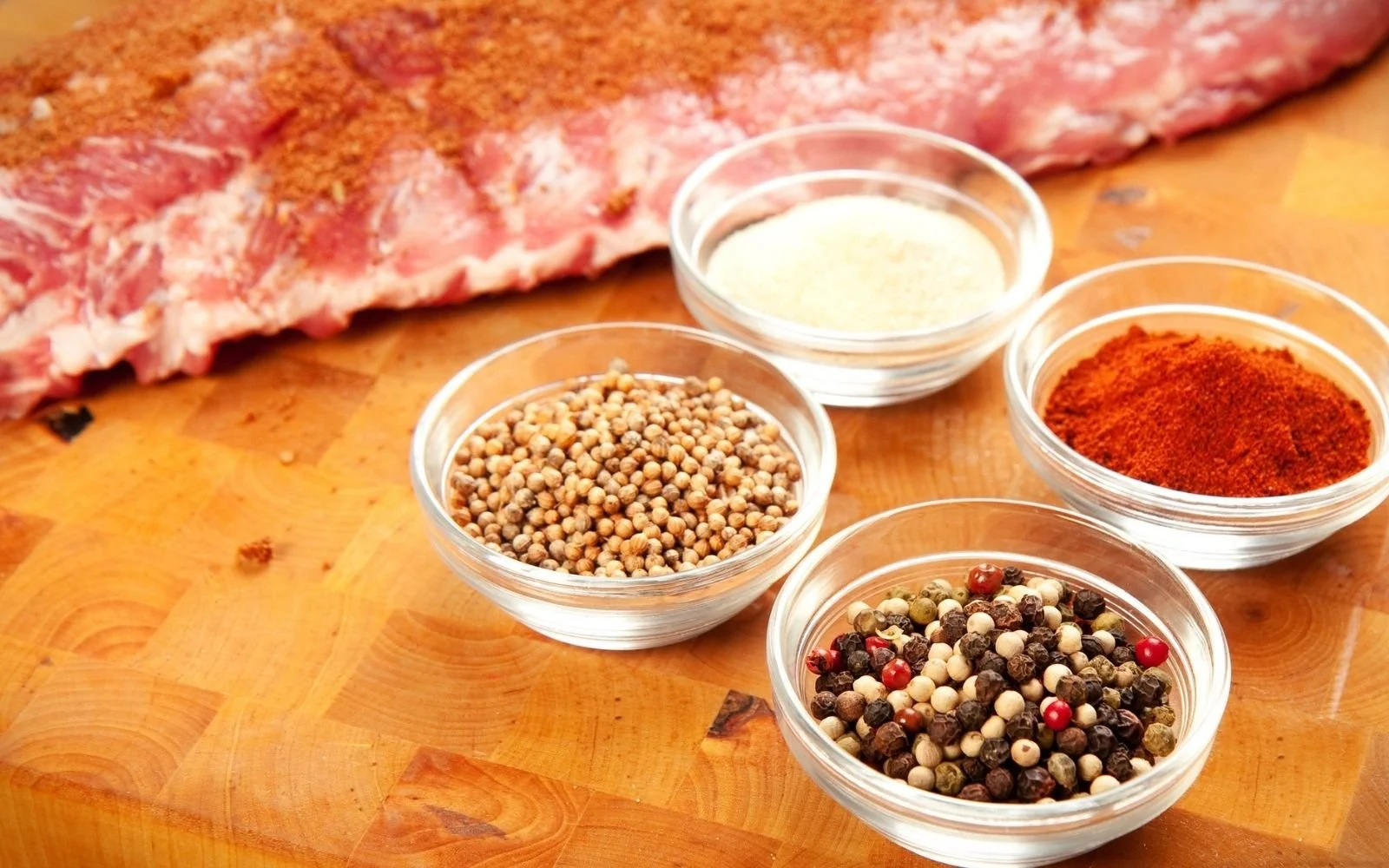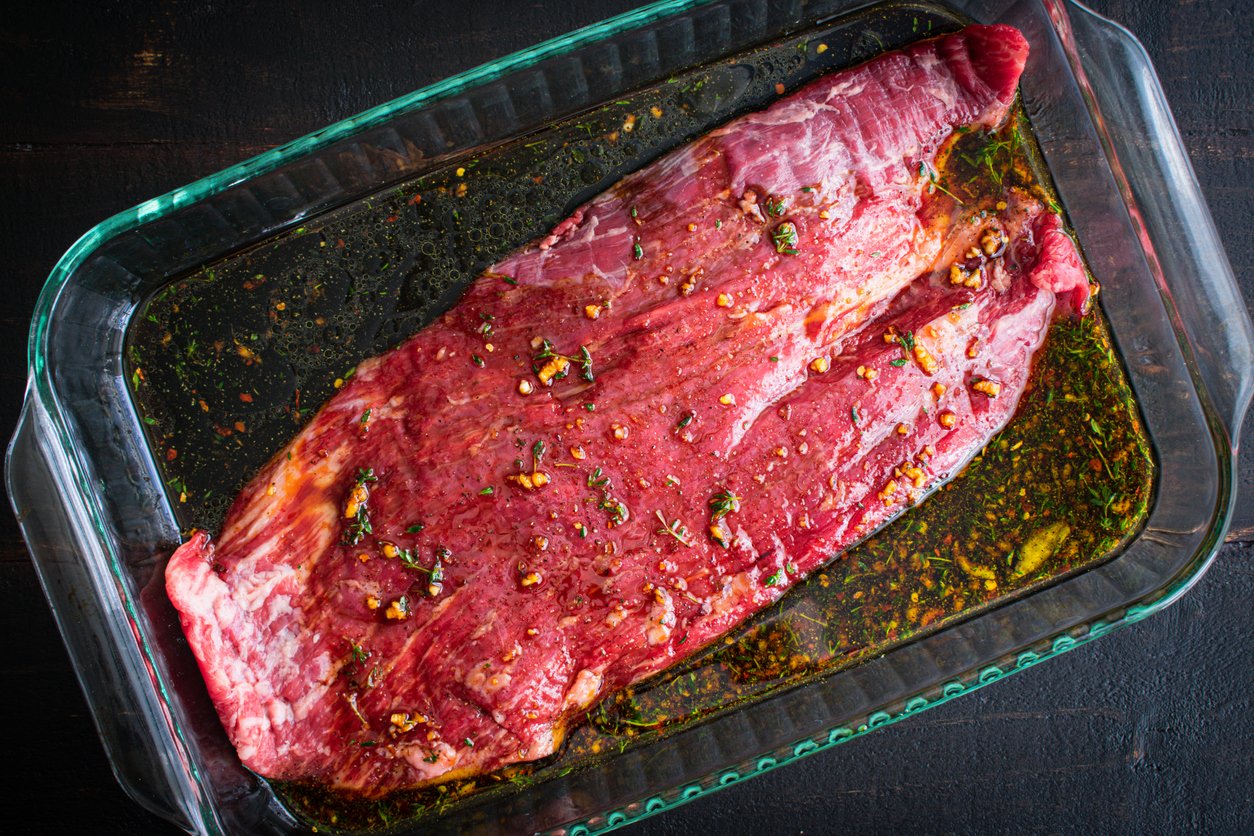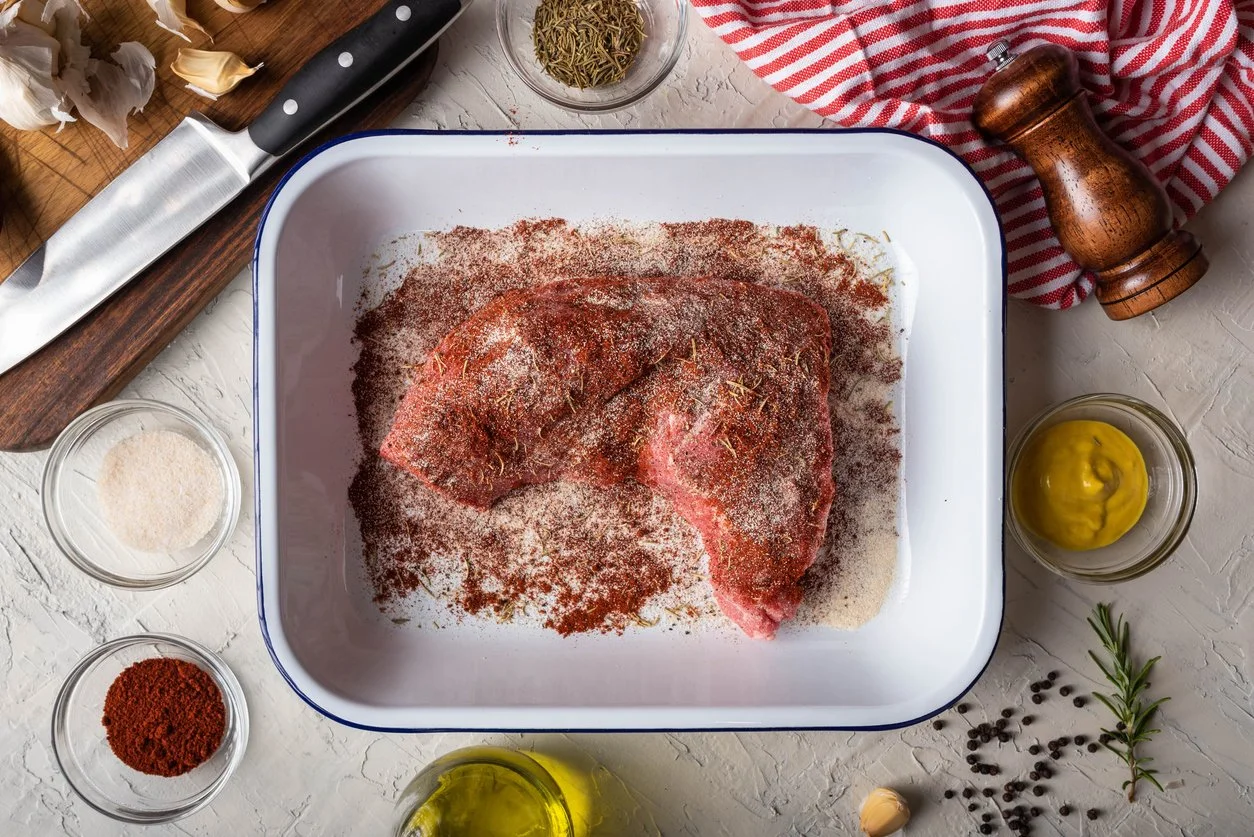Rubs, Marinades & When You Should Use Them
Discover > Texas Home Cooking > Rubs, Marinades & When You Should Use Them
When I first started slow-cooking briskets in my mini smoker, or even pan-frying steaks back when I was young, I became familiar with all sorts of rubs and marinades. Along this journey, I’ve learnt a lot – and I’ve made plenty of meat-based boo-boos too! For example, I made the mistake of marinating a steak before pan-searing it… and sadly, it made quite the juicy mess (I still ate it though!).
So, I decided it’s time to write a little piece about rubs, rib marinades and steak marinades, as well as the difference between marinades and sauces.
When do you use them, and how do you choose between them? Well, it all boils down to the specific cut of meat you’re going to cook. Is it tender? Or is it lean and tough?
Let’s learn about the right way to inject flavor into your meat without ruining your Sunday family barbecue!
Soak It: Marinades
Marinades are most often a mix of liquid and dry herb seasonings. The combinations of these two components are endless – some types of marinade are better for penetrating leaner meats, while others give tender cuts a real kick of flavor.
Some marinades call for the use of acidic liquids such as lemon juice, vinegar, ginger, fresh papaya, figs, pineapple, and even wine. This is because these liquids not only add flavor, but also tenderize the meat. However, it’s important to remember that when using tenderizing marinades, it’s easy to overdo it.
I remember once how my top round stew turned into a shredded beef soup when I soaked the meat in pineapple juice for too long. Usually, tough cuts of meat should be marinated for a minimum of six hours but for no longer than 24 hours. On the other hand, tender meats like tenderloin or top sirloin should only be soaked in marinade for around 15 minutes to 2 hours.
The ratio for beef marinades is usually around a quarter to a half cup of marinade for one to two lbs of meat. To your preferred marinating container (a bowl, ziplock bag, or whatever you fancy), add your marinade and set aside an extra portion for basting if needed. Add the meat to your container, shake it to make sure everything is coated nicely, and place it in the fridge – you should always marinate meat in the refrigerator!
Usually, I use a large-sized ziplock bag so I can evenly distribute the marinating mixture around the meat from time to time. After marinating, pat the cuts of meat dry with a paper towel. This allows the meat to brown and will prevent any steaming from occurring.
Coat It: Rubs
Putting together different seasonings and rubbing the mixture on meats is a key culinary technique in Texas! You can also mix in a rub with ground beef when preparing a mean bowl of Texas chili. Always remember that rubs are not added to tenderize meat. Instead, they are used to season meat cuts that are already tender, like slow-cooked beef brisket. (What wine goes well with beef brisket?) Coating meat in a rub not only adds loads of flavor, but also traps in the tasty juices – in this way, the meat is kept nice and moist.
Plenty of Texas BBQ joints love to use rubs on their meats. Take for example Cattleack Barbecue. This restaurant adds delicious made-from-scratch rubs to their briskets, with their seasoning mixes creating flavors you cannot find elsewhere. If your mouth is watering like mine, don’t worry! You can achieve these flavor explosions at home yourself.
When making a rub, a great way to start is by choosing the herbs and spices that appeal to your preferred flavor profile. Take your time here, as this is what will give the meat its taste! To make your rub stick to the surface of the meat and give it that awesome crunchy bark, you’ll need to add liquid to the mix.
For this, add water or oil – if you fancy it, you can even use some soy sauce (how long does soy sauce last?), apple cider, tomatoes, or lemon juice to add extra flavor. Once your rub is ready, coat your meat right before roasting or grilling it. If you want the flavor to be even more pronounced, add the rub to the meat hours before cooking it and let it rest in the refrigerator.
What is the Difference Between Marinade and Sauces?
These two types of liquid solutions are commonly used in home cooking in Texas. But their uses are quite different.
As mentioned, a marinade is a liquid solution. We soak food in a marinade while a sauce is served with cooked steak.
Typically, a marinade is a mixture of ingredients. It is not cooked. However, a sauce can go through a cooking process.
But you can use leftover marinade as a sauce. Before you do so, cook it first.
Can a Dry Drub be Used as a Marinade?
Some home cooks in Texas prefer dry drubs to marinades. I can't blame them because nothing can beat dry rubs in developing a well-textured exterior.
A dry rub is a blend of seasonings and spices that you rub on meat. It doesn't have any wet ingredients. It is applied to meat shortly before you can cook the steak.
What is Better for Steak: Dry Rub or Marinade?
Dry rubs produce a light crust around the meat. They lock in juiciness.
Marinades, on the other hand, use an acidic base to tenderize the steak and up the flavor.
In my opinion, each one deserves its time in the limelight. Both are viable options for making steaks tasty. They can also do wonders for any type of meat and vegetables.
I hope you’re now a little more clued up about what marinades and rubs are and when to use them. Both of these seasoning techniques can be adjusted to your flavor preferences. Want your meat nice and sweet? Try a juicy pineapple marinade. Fancy some spicy brisket? Add some black pepper and paprika to your rub. In Texas, there are no limits when it comes to flavoring your meat and making it taste out of this world.
Want to know about the different spices, marinades, and rubs commonly used in Texas? Check out our TexasRealFood promptuary here.
Utilizing our collective expertise at TexasRealFood, we've identified 22 exceptional barbecue brisket restaurants. From food truck-based joints to long-standing pits, these Texas establishments excel in serving mouthwatering, delectable meats.
Looking for some tips on how to cook steakhouse quality steaks?
To learn more about your ultimate guide to BBQ tips and tricks.




